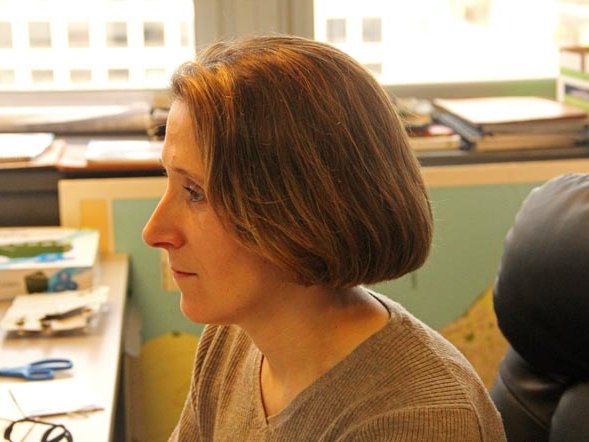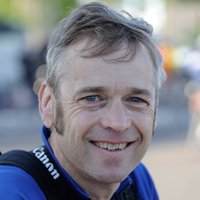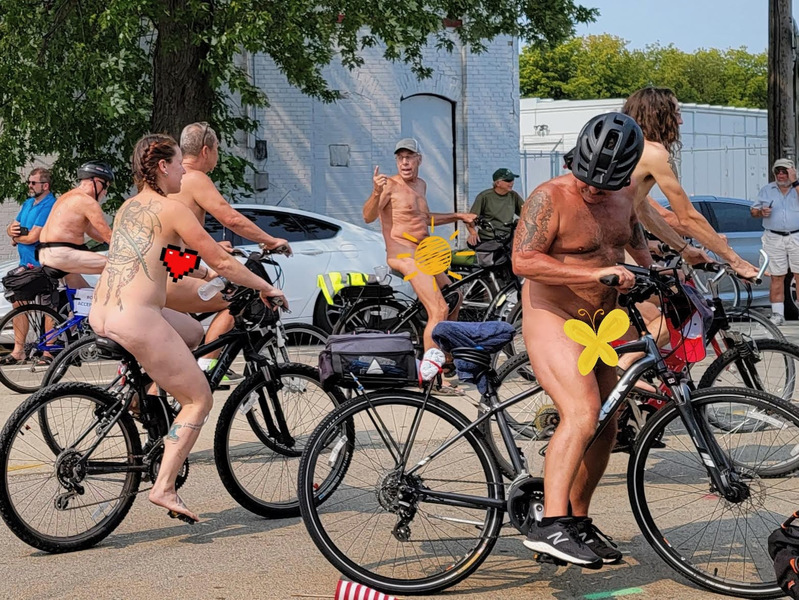Three weeks into her new job as the head planner of Milwaukee’s bicycle and pedestrian pathways, Kristin Bennett has decided on her first major supply requisition: dry erase markers.
"I need to write on my windows, because I don’t have enough room for a white board to create a list of what’s going on in the next three months, six months, nine months," Bennett said.
The comment was a small part of an hour-long discussion, but it reveals Bennett’s practical nature and approach to building a city that gives people transportation choices. She wants to take time to learn what’s here before making bold promises about what will be.
It’s worked.
The Association of Bicycle and Pedestrian Professionals named Bennett the professional of the year in 2012, for her work in Colorado Springs, Colo. She was recognized for adding bicycle lanes, shared lane markings, a bicycle parking program and the city’s first bicycle map. During her tenure, the city received a silver rating from the League of American Bicyclists as a Bicycle Friendly Community. Milwaukee has a bronze rating.
Before her eight-year stint in Colorado, Bennett worked for metropolitan planning organizations in Rochester, N.Y., and Grand Rapids, Mich., her hometown. Now 40, she rode BMX bikes as a girl, picked up triathlons while studying urban planning at the University of Oregon and "always commuted by bike."
She replaces Dave Schlabowske as the city’s Bicycle and Pedestrian Coordinator, and looks over the downtown streetscape from a small cubicle on the 9th floor of the Zeidler Municipal Building.
As an OnMilwaukee.com introduction, here’s a bit of what she shared in our chat this week.
Why Milwaukee: "We’re both from the Great Lakes, and we really, we weren’t western people. We really missed the water a lot. My husband grew up in Traverse City, Michigan. To be back on Lake Michigan, though it still screws me up that it’s on the east side and not the west. I still have to work with that one, but my folks are still in Grand Rapids and he has some extended family up in Traverse City. We miss trees, green grass, four seasons. The normal, how we grew up. We wanted to be closer to family and what we grew up with and what we like about our lifestyle."
Personally, I knew Dave (Schlabowske) from email and list-serve stuff and our professional organization. They have things off the ground. They seem to be doing things. Obviously, Wisconsin has a lot going on for years with a lot of trails and cycling. It was a chance to package doing what I love to do and am good at with a chance to be back in the Great Lakes.
Early impressions: I need to just get out and see stuff. There’s been a very good start on things here. There’s a fair amount of bike lanes. I think it’s no different than a lot of places where they start putting their facilities in and they don’t always sync up, but they’re being as opportunistic as possible. Our system looked the same in Colorado Springs. Maybe you only go so far one year, but you’re filling in gaps as you go along. I think there are some real challenges with snow and the amount of parking and how that tends to narrow the roadways seasonally.
Lessons from Colorado Springs: "If you haven’t worked at the municipal level, you don’t know how projects get built and all the steps to them. I knew how to design a project, what parts and pieces. At the municipal level, how you can deliver a project is what you’re learning, and where you can jump into everybody’s else’s work is the other thing. You’re not necessarily going to be building a lot of your own projects per se, you’re going to try to build as many projects on everybody else’s work. If there’s a bridge project going on, or if somebody’s building a street project or there’s a paving project, you have to find every one of those you can and get as much value out of those at the time.
The goal of bicycle and pedestrian planning: "I think there are a lot of people who would like to choose to do something else, even if they still use a car for things. We own a car. We still use a car for things. I don’t make every trip on a bike. I don’t walk everywhere, but I have choices. There’s a lot of people who are interested in options, they like to choose riding sometimes or walking, but either it’s not convenient or it doesn’t feel safe or it’s not obvious to them how to get through. One of the biggest concerns most people have is safety. If there’s consistently a system that’s connected and it’s clear how to use it and they feel comfortable using it, more and more people will make those kind of choices."
Approach to building a bike and pedestrian system: I’m definitely practical in the sense that I’m not interested in putting in something just because we put a line somewhere in a plan. If it isn’t going to fit with reality, I’m not interested in putting in something that would be viewed by the majority of people as something they would be uncomfortable with. They’re not going to feel comfortable right up against a bunch of parked cars with a lot of traffic, and it’s hard when you have narrow rights of way. Parking is a big issue here. You don’t want things to be circuitous or difficult for people because you want them to be able to choose that and make that the logical choice.
Measure success: Often times, people are focused on performance measures like how many miles did you add. I’d rather make sure that we’re adding high quality miles and something that’s useful. I know that was a big pressure in Colorado Springs, ‘did you hit your 10% increase this year in bike lane mileage.
In some years we did and some years we didn’t. In the end we were averaging more than that and I felt fine about it, but there were a couple places I took out bike lanes. One place, I said we can sign this as a bike boulevard; we didn’t need to waste the paint. It was an enormous street, low volume, parallel to a busy street. It didn’t need to have paint. I could have striped the whole rest of the thing and said I got another mile and a half but that’s not what you’re out for. I was happy to take the bike lanes off of there. It didn’t need it. Nobody rode in them anyway. They all just kind of rode four abreast, because it was a ridiculously wide street."
Off-the clock fun: I do like to ride, and it is a little hard though, because we’re out riding and my husband will say, ‘stop looking at things. I know you’re looking at things.’ Or I’ll email myself at work. It’s hard not to because your job is something you enjoy. I grew up camping and boating and fishing and everything. I think that will be a lot more practical to do here in the Great Lakes. Doing those things in Colorado was almost more of an effort because you are at altitude. You had to plan for the worst at all times. You don’t just go car camping. You have to plan for bears and mountain lions.
Memories of running cross-country for the Slinger Owls motivated Tom Held to get his body moving again when he turned 30. Almost two decades later, he's still on the move. The 49-year-old bikes, runs and skis, and covers news for similarly active people as a freelance writer and blogger.
He spent 26 years as a daily news reporter, and applies that experience to dig out stories about athletes, races, endurance sports, fitness and self-propelled transportation. His work has appeared in Silent Sports Magazine, Wisconsin Trails and Cross-Country Skier.
Held lives in the Bay View neighborhood, where he counts being Dad to twin daughters part of his daily workout.







